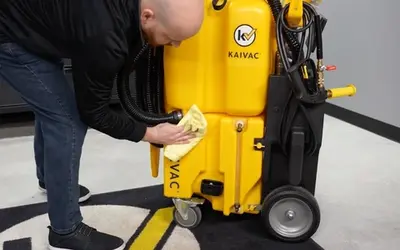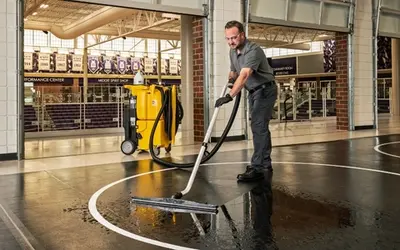The Ultimate Restroom Cleaning Checklist

A well-thought-out restroom cleaning checklist can help businesses run more smoothly and be more profitable. That may seem like a big promise from a little printed worksheet, but formal restroom cleaning instructions do a lot of heavy lifting. They set out clear expectations and protocols. They outline an order of operations to ensure that restrooms look, smell, and actually are clean and sanitized.
But can restroom cleaning guidelines really help a business run more smoothly and be more profitable?
Absolutely. Clean and sanitized restrooms are vital to customer satisfaction according to a Harris Poll. This work found that 89% of Americans would not visit a restaurant based on negative online reviews about its restrooms.
Employees feel the same way according to a 2020 Harris Poll conducted on behalf of Cintas. This poll found that 90% of Americans think employers who regularly deep clean their workplace restrooms care more about their health and wellness than those who don’t.
Yet restroom complaints remain the number one challenge to customer satisfaction, according to the Cleaning & Maintenance Management’s Building Service Contractor Benchmarking Survey.
Committing to a restroom cleaning checklist sets expectations and guides employees through the tasks. Along with proper training, official restroom cleaning instructions are the best way to ensure your employees deliver clean, fresh-smelling, spaces that safeguard public health.
Finding Restroom Cleaning Instructions
Plenty of free restroom cleaning checklists are available for download. They range from short lists of simple daily tasks to more complex grids. Some include weekly, monthly, and quarterly jobs as well.
No matter which you choose, make sure they include every important cleaning task. That includes the obvious, like toilets, urinals, and sinks and the not-so-obvious. “The toilet is not a restroom’s most unsanitary place,” writes Kirk Kirssin, Director of Service for Cintas in this article. “Many different surfaces harbor bacteria.”
In addition to toilets, Kirssin stresses the importance of cleaning and disinfecting common touchpoints including:
- Door Handles
- Dispensers and Dryers
- Light Switches
- Grab Rails
- Restroom Stall Walls
The floor is another important—if unexpected—restroom touchpoint. Research shows that public restroom floors are the germiest spot of all. Shoes carry those pathogens out of the restroom and into the rest of the facility. But, people also touch the floor or touch items set on the floor all the time.
This means that a really effective restroom cleaning guidelines should focus a lot of attention on floor care.
Restroom Cleaning Guidelines are Just the Start
Clean restrooms are as vital to public health as they are to a business’s reputation. Considering the stakes, posting a restroom cleaning checklist and hoping for the best seems risky. The best restroom cleaning strategy combines the “what needs to be done” with the “how and why we are doing this.”
That means training. Training sessions should cover procedures along with expectations. Effective trainers should stress why cleaning is important to health and the company’s reputation. These investments in time and resources will help connect employees to the mission and create a culture of clean.
Investing in better cleaning tools can also drive better results. More advanced than a bucket and mop, these machines work faster while fully removing dirt, soils, and pathogens. Adding state-of-the-art cleaning tools to the restroom cleaning checklist will help staff finish the job quickly so they can move on to other tasks.
Ready to learn more restroom cleaning tips? Click here.
Related Posts

Preventive Maintenance for Your No-Touch Cleaning® System
Your Kaivac No-Touch Cleaning system makes restroom maintenance fast and easy. Keeping your No-Touch Cleaning system in good working order is also fast and easy. Kaivac makes performing preventative maintenance and troubleshooting potential issues simple. No special equipment or technical expertise required.
Read more
A Cleaning Lesson from Schools and Universities that Rely on Kaivac Systems
School, college, and university facilities departments from around the country love their Kaivac Cleaning Systems. Why wouldn’t they? Designed with the custodial worker in mind, these tools and processes from Kaivac are easy to master, work super-fast, and deliver exceptionally clean, fresh-smelling spaces.
Read more
Reduce Absenteeism Through Better School Cleaning
K-12 school leaders are coming up with a variety of ways to combat chronic absenteeism. Strategies like offering in-school laundry services and basic health care show a lot of promise. But providing better cleaning may be one of the most effective, most cost-efficient tactics available.
Read more